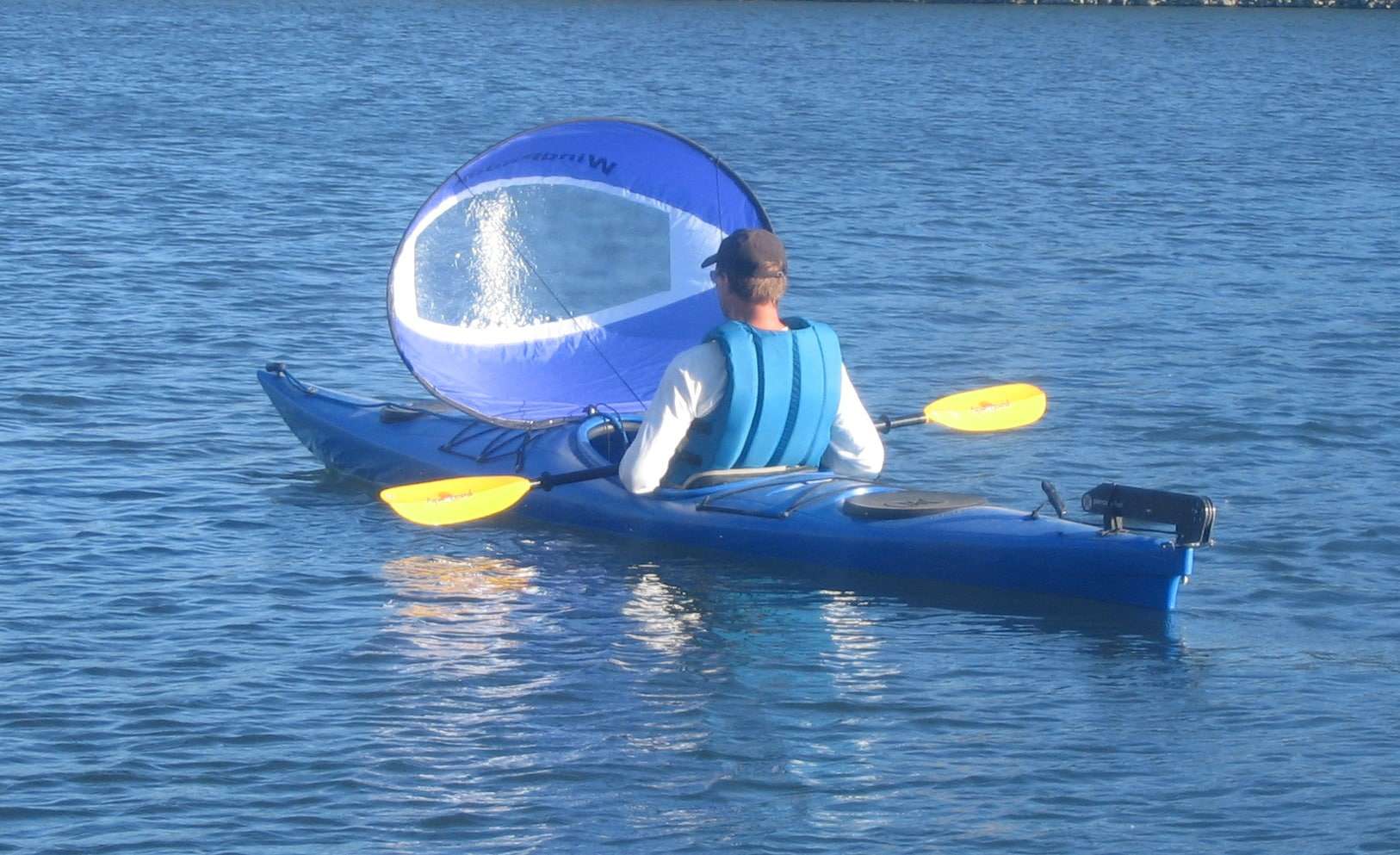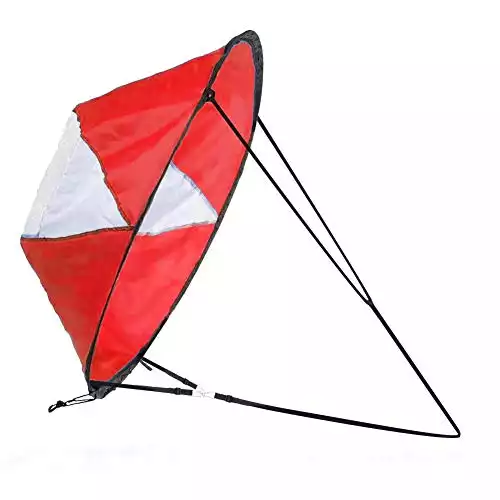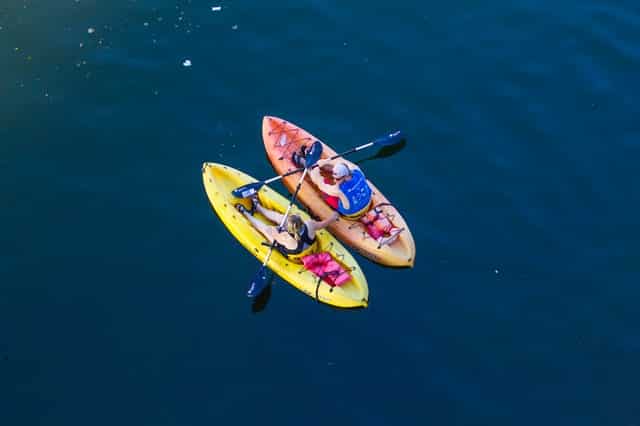What Is A Sailing Kayak & How To Start – Help Guide & FAQs
Why should you sail a kayak? Easy: it’s a lot of fun! Sail-kayaking is almost exactly what it sounds like- you strap a sail to a kayak. You then go about much faster because you have the advantage of the wind on top of your paddling.
If you’re an adrenaline junkie and love the thrill of going fast sail kayaking is great. It also combines two beloved sports: sailing and kayaking. Separately, they’re enjoyable, but sail kayaking takes things to another level.
It doesn’t matter if you’ve only done one of these sports before. Basic kayak paddling is very easy to pick up, and the one sail on the boat means that it’s easy for inexperienced sailors to learn how to use it properly.
Anyone who’s been in charge of their own boat is likely to have an intuitive sense of how to balance, turn and utilise the weather conditions, so people who have only tried sailing or kayaking individually before will have a head start.

So, you’d like to give it a go? Great! If you’ve got a kayak you can strap a sail to it, and there’s some useful how-to videos on YouTube. If you’d like to try it before you commit to buying the equipment, check out your local watersports centre and see if they’ve got any kayak sails available.
They may also have an instructor who can talk you through adjusting your sail, setting up the boat and getting you safely onto the water. If you’ve got some experience kayaking before it’ll probably only take around 10 minutes before you’re kayak-sailing confidently.
How to get started – Sailing Kayak
Let’s run through the basis of how it all works.
Firstly, you want to let the sail catch as much wind as you can, so let the boom out when the wind is behind you.
If you’re not a sailor and don’t know the jargon, the boom is the metal bar at the bottom of the mainsail. You adjust it to catch the most wind. Be aware that you physically can’t sail straight into the wind.
If your sail starts flapping you’ll need to adjust its position so it goes back to working with the wind to give you a boost. You can do this by changing the angle of the boom.
If you want to travel upwind, pull the boom in tightly. You won’t be able to sail straight into the wind, so this will require you to paddle without any assistance.
You should also learn how to keep your balance as this will stop you from capsizing. As with most sail-kayaking, this will quickly become second nature, but basically, if you feel the boat tilting one way, lean in the opposite direction to counter it.
You can also use your paddle to stabilize yourself by skimming it over the surface of the water like an outrigger.
If the wind suddenly picks up and you’re not confident that you’ll be able to keep the boat balanced, pull the sail down and just paddle for a moment. If it’s an especially windy day, try using a smaller sail as you won’t need as much wind to propel the boat.
The size of the sail can make a big difference, so pay attention and don’t use a big sail on a windy day for the first time, as it’s likely you’ll capsize.
Common questions about kayak sailing:
Do you need to paddle and sail at the same time?
No! But you’ll go faster if you do. It’s entirely possible to get your kayak sailboat to move by only kayaking or sailing, but it’s the combination that makes this sport great. You can also stop padding for a moment to grab a drink and know that your boat will keep moving because of the sail.
Do I need a special sort of kayak?
No! It’s possible to fix a sail onto almost every kind of kayak. If you’re looking to adapt a kayak that you already own, try looking for sails specifically for that model. Otherwise you can buy special kayak sailboats that come with all the equipment already attached.
What do the kayak sails look like?
There’s some variation. Some of the sails look a little like upturned umbrellas and strap on to the front of your kayak. These usually only work when you’re kayak-sailing into a particular direction.
Alternatively, you can get sails that look much more like those found on conventional sail boats. These tend to be more expensive and harder to handle, but it pays off and you’ll get a lot more out of it.
How do I steer a sail-kayak?
If you’re a sailor you’ll be familiar with a rudder, which sits in the water at the rear of the boat and angles it in the correct direction, as it is turned by the sailor. Sail-kayaks don’t have that and you’ll need to use your paddle.
Turning a kayak with a paddle is extremely easy: you can either paddle harder on one side to turn in the other direction (so you paddle on your left to turn the boat right) or you can angle the paddle and use it as a rudder, in a move aptly called a ‘stern rudder’.
To do this, you’ll need to place the blade of the paddle in the water so that the flat part of the blade is at a right angle to the water’s surface. You then use it like a normal rudder.
If you’re looking to turn right, put the paddle into the water in the stern rudder position on the left. Then push the paddle away from the boat, like it is rotating on its axis with you in the center. The boat will then adjust its position and turn right.
Conclusion
Sail-kayaking is an amazing way to amalgamate two watersports, learn more about both of them and have a really good time.
Sail-kayakers learn to react quickly and practice a whole host of skills that are endlessly useful for kayaking and sailing. We hope you give kayak sailing a try and enjoy it as much as we do!



![Where To Buy A Fishing License [Interactive State Map]](https://watersportingadventure.com/wp-content/uploads/2021/03/where-to-buy-a-fishing-license-768x463.png)



![8 Best Inflatable Kayaks [Product Reviews & Guide]](https://watersportingadventure.com/wp-content/uploads/2020/10/38757512235_e461587c6f_b-768x471.jpg)